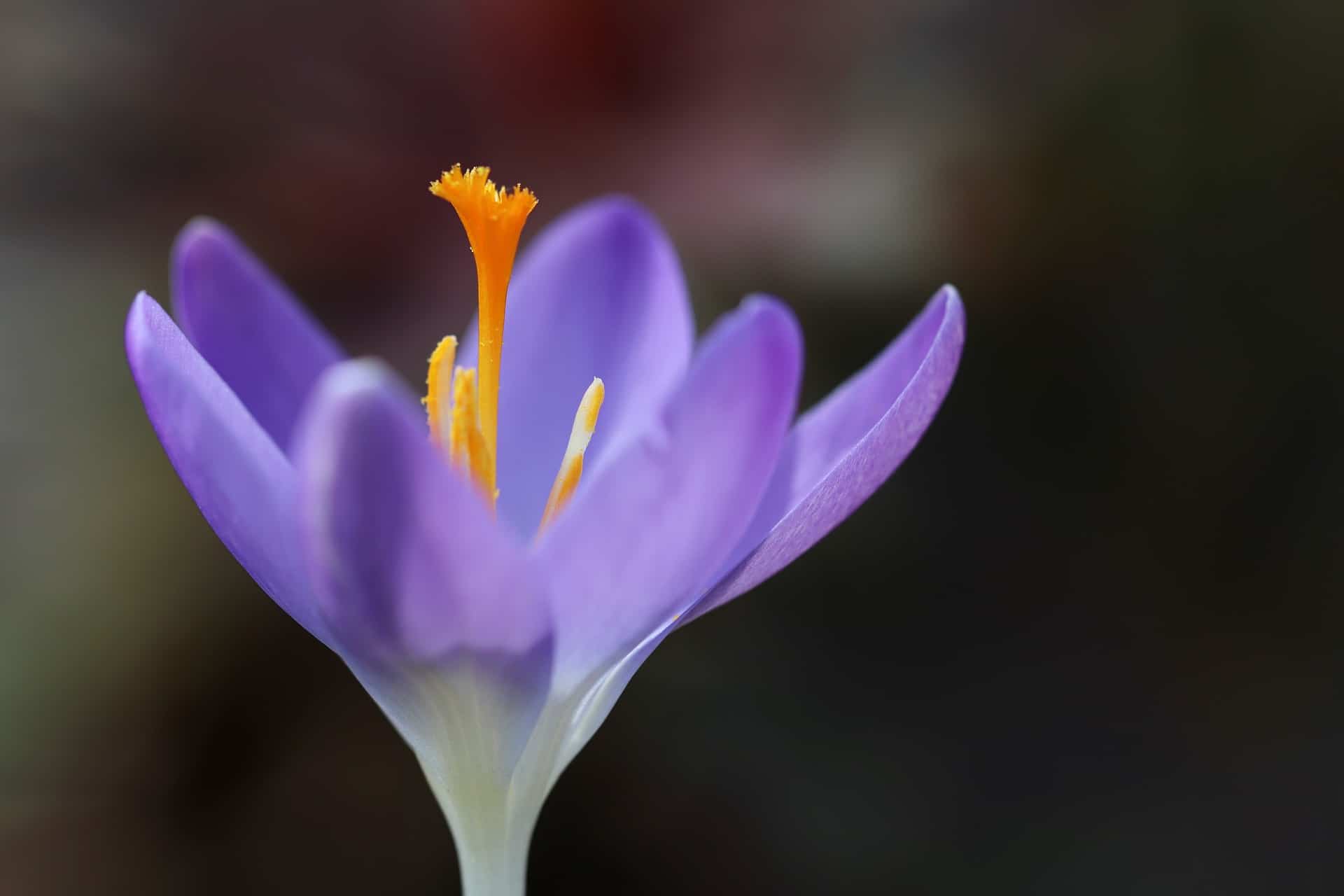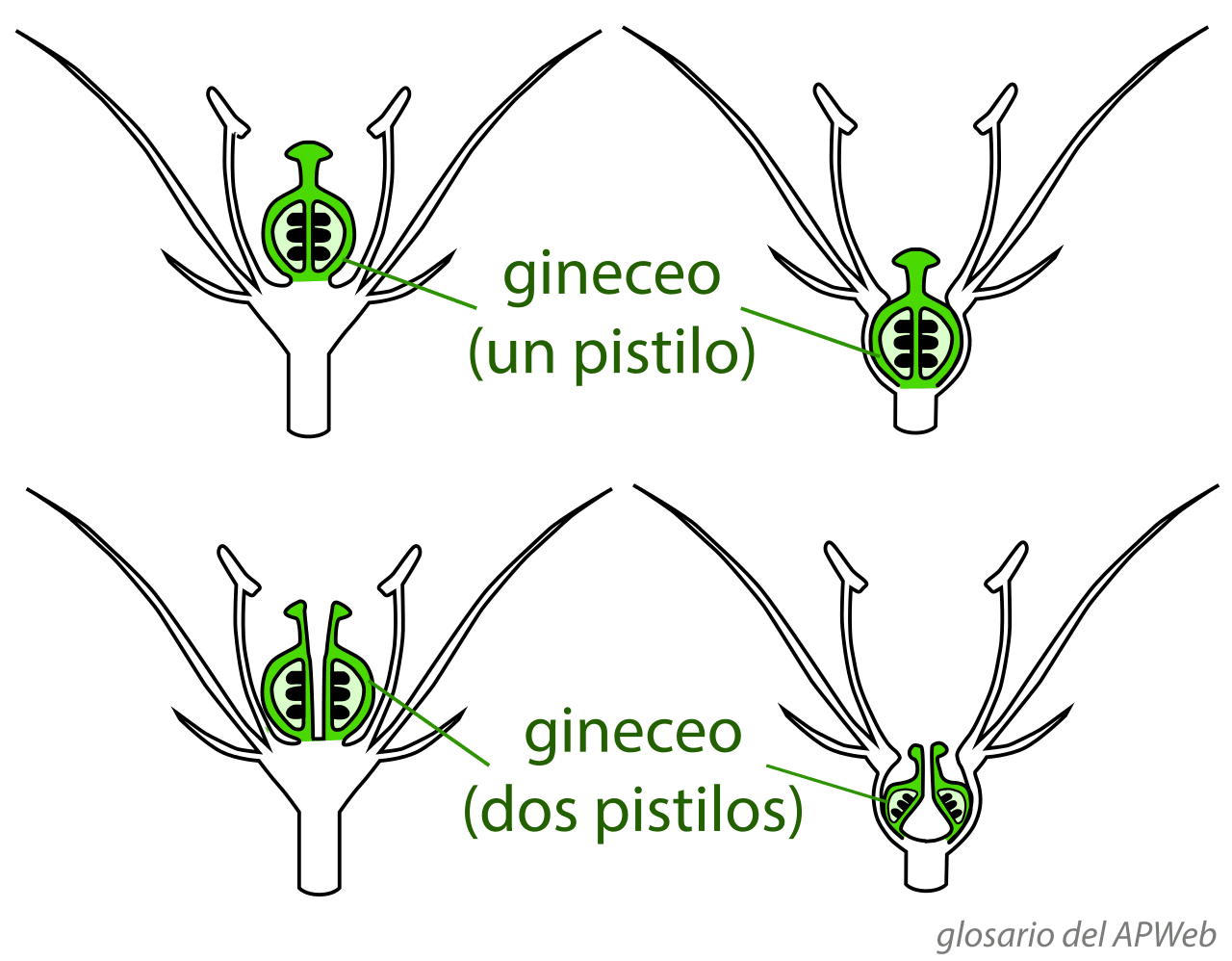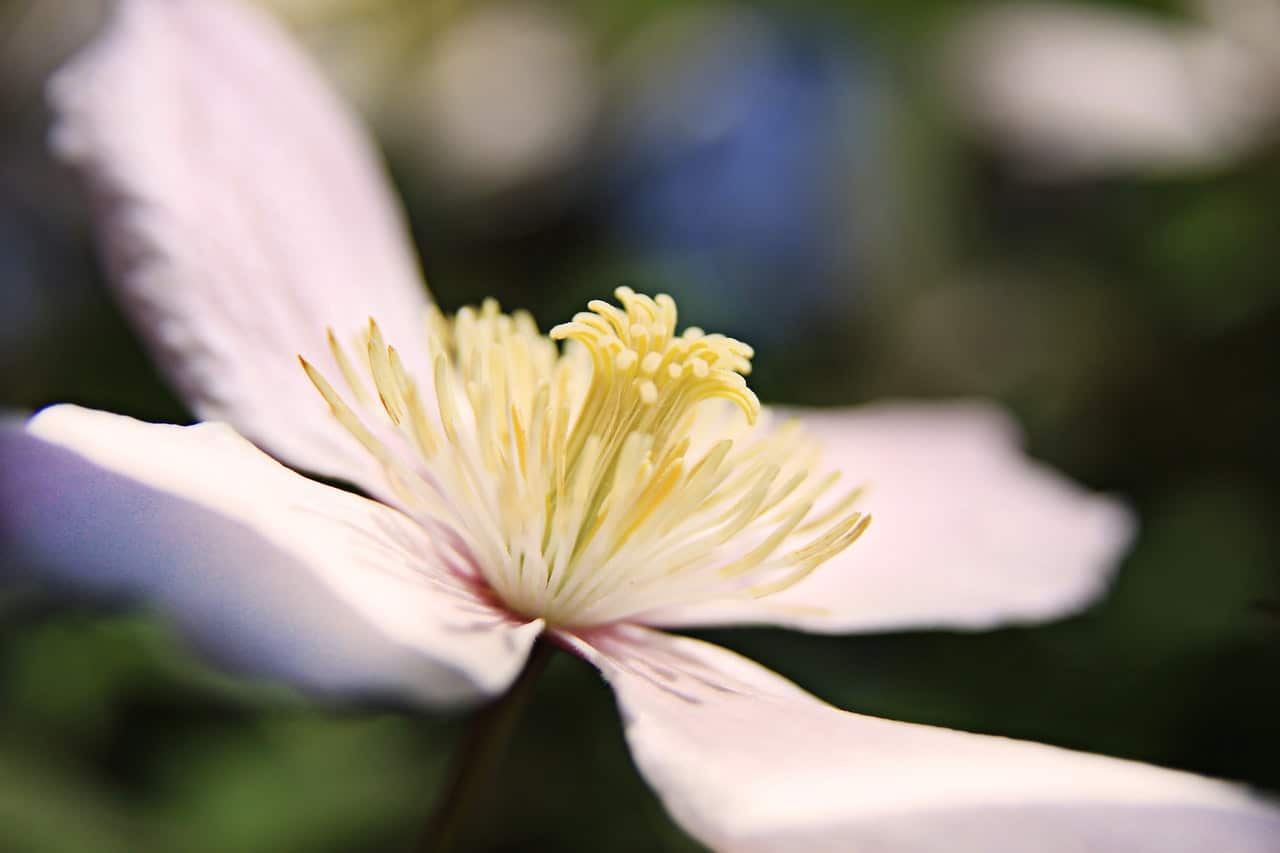
It is in all female and hermaphrodite flowers. Sometimes it rises proudly on the petals, other times it seems to want to hide between the stamens. Its color varies greatly depending on the plant species, however, its basic shape does not change. The pistil is one (another, rather) masterpiece of nature, thanks to which evolution can continue.
Like the ovary of the female individuals of the wonderful family of mammals, the pistil is the cradle so to speak of those seeds that, if all goes well, they will germinate until they become trees, palms, cacti,… in short, the plants that beautify the planet.
What is the pistil?

The pistil, or as it is now called gynoecium, is the most important part of a female flower o hermaphrodite. It is at the center of it, and it is where the growth of a new generation can begin.. It is composed of a set of carpels (modified leaves) whose parts are the following:
- Ovary: is the one that contains the ovules to be fertilized.
- Style: it is an extension of the ovary, which joins it with the stigma. It does not contain eggs.
- Stigma: it is the part of the flower that receives pollen with the cells or male gametes.
Although at first we might think otherwise, there may be one or two pistils. In hermaphroditic flowers they are not always well visible, since they can be confused with the stamens. This is so because they do not depend on anyone so that their ovaries are fertilized, since they depend on themselves and in certain cases on factors such as the wind, so they do not need to attract any insects or animals.
In the female ones, in general, they are one of the parts that stand out the most, since they must be seen by the pollinators as soon as possible.
What is the function of the pistil of a flower?
The main function is to produce the sex cells or gametes that will give rise to the fruits of the plants.. But in reality, it is not as straightforward as it sounds, especially for female flowers. And it is that, although for us a landscape full of flowers of different colors is a reason for joy, for plants that same landscape is a scenario in which the fight to attract a pollinating insect can be brutal.
In this battlefield the weapons that plants have are colors, and in most cases, also smells. The light colors and sweet aromas will attract insects that are vital to the world: bees. But the supply may exceed the demand; Or put another way, there may be more flowers than bees. That's when the 'flower war' begins, and when evolution comes into play.
If a plant gets its flowers pollinated in most cases, it will not change. But the less fortunate will modify their strategy, or they will end up dying out. Natural selection. The strongest plants do not survive, but rather those that manage to adapt to the changes that are taking place around the world over time.
And this is something that we have to be very clear about, because if we want to take care of the environment, the best we can do is grow native plants (or at least combine them with others in the garden or patio), because that way we also help the fauna of our area to survive.
You have to think that plants and insects often go hand in hand. Those that have hermaphroditic flowers and are therefore capable of producing their own fruit with seeds, do not depend so much on animals, but those that only have female flowers should be able to have a chance to create a new generation, which brings me to the following question:
When the pistil matures, what is formed?

Once a tiny pollen grain reaches the flower stigma, from the ovule a small tube will grow that will reach the end of the pistil. From there, the zygote will be formed, which will be the first cell of the plant which has only just begun its development.
More or less quickly, that cell will divide more and more until it forms what will become the seed. As it matures, so will the pistil: the ovary will thicken, while feeding and protecting the seed. When it is finally ready, the fruit can be detached from the plant and thus start the race for its survival.
How long does it take between the fertilization of the flower until the fruit ripens?
This is a very interesting question, but it does not have a single answer, since there are many types of plants. But to give you an idea, you should know that:
- Annual plants: they are those that live a year (or something less). At that time, they germinate, grow, flourish, bear fruit, and ultimately die. They leave their seeds ready in a matter of a week or two usually, sometimes even less. Learn more.
- Biannual plants: they are those that live two years or so. During the first they grow and develop, while the second flower and, after bearing fruit, die. Its seeds ripen in a few weeks as well.
- Perennials:
- Trees, shrubs and palm trees: it will depend a lot on the species. Some take a few weeks, but others can take months (such as fruit trees) and even a year (as is the case with many conifers, For example).
- Bulbous and rhizomatous: they usually take less than a month.
- Herbaceous: Perennial herbs can take anywhere from a few days to a few weeks.
And if you've been wanting more, here is a video that explains how the pistil maturation process is: